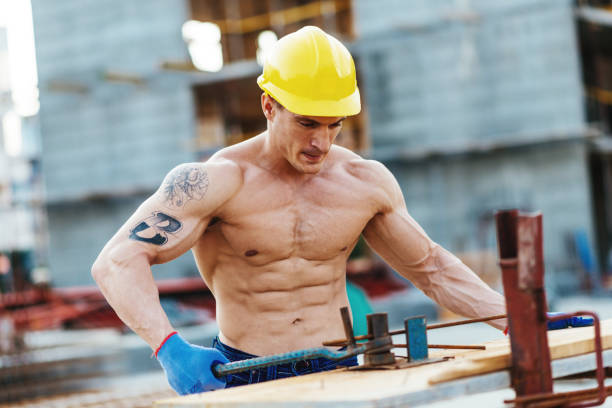
Who is Stronger – Construction Workers or Bodybuilders
The question of who is stronger—construction workers or bodybuilders—is a fascinating comparison of two distinct types of physical strength and endurance. Both groups excel in their respective fields, but their strength manifests in different ways due to the nature of their work and training.
Strength in Construction Workers
Construction workers develop their strength through practical, labor-intensive tasks performed daily. Their physical capabilities are often characterized by:
- Functional Strength: Construction workers gain functional strength by lifting, carrying, and manipulating heavy materials such as concrete, steel, and tools. This type of strength is practical and applies directly to real-world tasks.
- Endurance and Stamina: Long hours of physically demanding work build high levels of stamina. Construction workers often work in challenging environments, such as extreme heat or cold, which further enhances their resilience.
- Unpredictable Movements: Unlike structured gym exercises, construction work involves dynamic and irregular motions that engage multiple muscle groups simultaneously, improving overall coordination and agility.
- Mental Toughness: The repetitive and laborious nature of construction work demands mental strength and discipline, which can contribute to their physical performance.
Strength in Bodybuilders
Bodybuilders, on the other hand, focus on developing muscle mass and aesthetic physique through structured training regimens. Their strength is characterized by:
- Maximal Strength: Bodybuilders often train to lift heavy weights in controlled movements, which builds exceptional strength in specific muscle groups.
- Muscle Hypertrophy: Their primary goal is muscle growth (hypertrophy), which results in well-defined and proportionate muscles that are visually impressive.
- Targeted Workouts: Bodybuilders isolate specific muscles during training sessions, allowing for precise development and balanced physical symmetry.
- Controlled Environment: Training in gyms provides consistency and controlled variables, such as equipment and safety measures, which optimize strength-building efforts.
Comparing Their Strengths
While both groups are physically strong, their strengths serve different purposes:
- Functional vs. Maximal Strength: Construction workers excel in functional strength, which is practical for physical labor. Bodybuilders, however, often possess greater maximal strength due to targeted weight training.
- Endurance vs. Explosive Power: Construction workers typically have higher endurance levels, while bodybuilders specialize in explosive power for short bursts of effort.
- Injury Resistance: Construction workers’ dynamic movements may make them more adaptable and resistant to injuries caused by unexpected physical demands. Bodybuilders, with their controlled routines, may be less prepared for sudden, irregular movements.
Who is Stronger Overall?
The answer depends on the definition of “strength”:
- If “strength” is about lifting the heaviest weights in a gym setting, bodybuilders often have the edge due to their specialized training.
- If “strength” refers to the ability to perform physically demanding tasks over long periods or adapt to unpredictable challenges, construction workers might come out on top.
Conclusion
Ultimately, the strength of construction workers and bodybuilders reflects their respective professions and lifestyles. Construction workers exhibit raw, functional strength and endurance honed through daily labor, while bodybuilders display maximal strength and aesthetic musculature developed through rigorous gym training. Both are incredibly strong in their own ways, showcasing the diversity of human physical capabilities.

